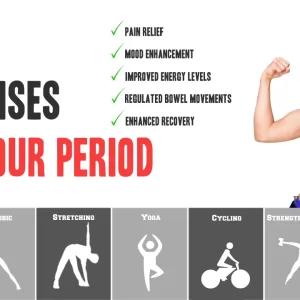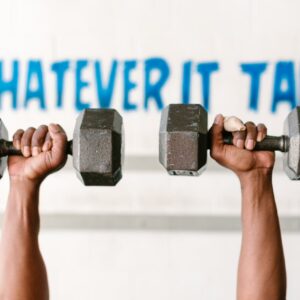Contents
- What Is the 70/30 Rule in the Gym?
- Why Nutrition Plays a Bigger Role Than Exercise
- Scientific Support for the 70/30 Concept
- How to Apply the 70/30 Rule to Your Fitness Plan
- Example Weekly Plan Using the 70/30 Mindset
- Common Misconceptions About the 70/30 Rule
- Adjusting the 70/30 Rule for Different Goals
- Conclusion
One of the most widely discussed principles in the fitness world is the 70/30 rule, which proposes that 70% of your fitness success comes from nutrition, while 30% comes from exercise. This concept isn’t a rigid scientific law, but a guiding framework to remind people that what you eat matters just as much—if not more—than how you train.
Whether your goal is weight loss, muscle gain, or improved performance, this rule helps emphasize the crucial role of dietary habits in achieving sustainable results. In this article, we’ll explain what the 70/30 rule means, why it’s important, and how to apply it effectively in your fitness journey.
What Is the 70/30 Rule in the Gym?
The 70/30 rule refers to the commonly held belief that:
- 70% of your physical results (weight loss, fat reduction, muscle tone) are attributed to what you eat
- 30% of the outcome comes from your exercise and training efforts
This doesn’t mean exercise is unimportant—it means that nutrition has a greater impact on body composition, energy levels, and metabolic health than many people realize.
Why Nutrition Plays a Bigger Role Than Exercise
1. You Can’t Out-Train a Poor Diet
A 500-calorie deficit from food is much easier to achieve than burning 500 calories through exercise. For example:
- Skipping a sugary soda = ~150 calories saved
- Burning 150 calories = ~20 minutes of jogging
2. Food Quality Affects Recovery and Performance
Nutrient-dense foods:
- Promote muscle recovery
- Support immune function
- Fuel your workouts more effectively
According to the International Society of Sports Nutrition, proper nutrient timing and macronutrient intake can significantly enhance strength, performance, and recovery (Kerksick et al., 2017).
3. Weight Loss and Muscle Definition Are Primarily Dietary
Exercise builds muscle and burns calories, but visible results (like fat loss and muscle definition) are mostly achieved through caloric balance and dietary quality.
Scientific Support for the 70/30 Concept
- A 2011 meta-analysis in Obesity Reviews found that combining diet and exercise led to greater weight loss than exercise alone, but diet had a stronger independent effect on fat loss (Johns et al., 2014).
- A 2014 study in the Journal of the Academy of Nutrition and Dietetics concluded that diet alone was more effective for weight loss than exercise alone, though combining both is best for long-term success.
How to Apply the 70/30 Rule to Your Fitness Plan
1. Prioritize Nutrition First
Focus on:
- Calorie intake appropriate for your goals (deficit for fat loss, surplus for muscle gain)
- Macronutrient balance (protein, carbs, fat)
- Whole foods over processed foods
2. Support Your Diet With Smart Training
Use exercise to:
- Build lean muscle
- Improve cardiovascular health
- Burn additional calories and improve insulin sensitivity
3. Track Both Sides of the Equation
- Use food tracking apps
- Log your workouts and progressions
- Adjust weekly based on progress and feedback
Example Weekly Plan Using the 70/30 Mindset
| Day | Nutrition Focus | Training Focus |
|---|---|---|
| Monday | High-protein meals, no processed foods | Strength training (full body) |
| Tuesday | Hydration + fiber-rich vegetables | Steady-state cardio |
| Wednesday | Caloric control, portion awareness | Resistance training (upper body) |
| Thursday | Track macros and calories | Rest or active recovery |
| Friday | Prep meals for weekend | Strength training (lower body) |
| Saturday | Mindful eating at social events | HIIT or group class |
| Sunday | Nutrient-dense, light day | Light walking or yoga |
Common Misconceptions About the 70/30 Rule
| Myth | Reality |
|---|---|
| “I can eat whatever I want if I work out.” | You still need to manage calorie intake and food quality. |
| “Exercise doesn’t matter at all.” | Exercise is essential for muscle building, health, and performance. |
| “It’s always 70/30 for everyone.” | Ratios may vary; some experts use 80/20 or 60/40 based on the goal. |
Adjusting the 70/30 Rule for Different Goals
| Goal | Suggested Ratio |
|---|---|
| Fat loss | 70% diet / 30% exercise |
| Muscle building | 60% diet / 40% training |
| Athletic performance | 50% diet / 50% training |
| Maintenance/wellness | 70/30 or 60/40 depending on activity level |
Conclusion
The 70/30 rule in the gym is a powerful reminder that nutrition is the foundation of physical transformation. Exercise accelerates progress, but without the right dietary habits, your efforts may fall short.
By following this principle, you can align your training and eating habits for maximum results, better recovery, and long-term sustainability. Think of it not as a rigid formula, but a flexible mindset that keeps you focused on the bigger picture: progress, health, and balance.
References
- Johns DJ, et al. Diet or exercise interventions vs combined behavioral weight management programs: a systematic review and meta-analysis of direct comparisons. Obes Rev. 2014;15(6):533–549.
- Kerksick CM, et al. International Society of Sports Nutrition position stand: nutrient timing. J Int Soc Sports Nutr. 2017;14(1):33. https://doi.org/10.1186/s12970-017-0189-4
- Swift DL, et al. The role of exercise and physical activity in weight loss and maintenance. Prog Cardiovasc Dis. 2014;56(4):441–447. https://doi.org/10.1016/j.pcad.2013.09.012
- American College of Sports Medicine. ACSM’s Guidelines for Exercise Testing and Prescription, 11th ed.



